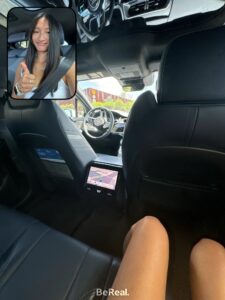As transportation technology continues to evolve, the autonomous vehicle (AV) rises as one of the most prominent innovations in the industry. However, safety concerns from government agencies and bystanders alike may harm the further development of AVs.
While we may think of AVs as the driverless cars of today’s world, such as the Waymo and Tesla models, AV development began in the 1980s. The U.S. Defense Advanced Research Projects Agency (DARPA) held its first “Grand Challenge” – a 150-mile off-road course – in 2004. Five AVs completed the course in 2005, and two years later, six teams completed the third Grand Challenge by navigating 60 miles of an urban environment.
Currently, AVs are divided into six classes defined by the Society of Automotive Engineers (SAE) and used by the U.S. National Highway Traffic Safety Administration (NHTSA). These classes range from Level 0, meaning absolutely no autonomous components, to Level 5, meaning fully autonomous, and these include common features such as adaptive cruise control and lane-keeping. Current driverless cars, like Waymo One, are considered Level 4, and are the highest-level AVs currently available.
Waymo began as a Google project in 2009, with an initial goal of driving over 10 uninterrupted 100-mile routes. They were established as an independent company in 2016 under Google’s parent, Alphabet, focused solely on self-driving technology. Since then, their robo-taxi service, Waymo One, has launched in Phoenix, San Francisco, Los Angeles, and Austin. They remain most prominent in Phoenix, even offering full service to and from Sky Harbor International Airport.
However, despite showing promise, driverless cars are not without risk. The NHTSA is currently investigating 22 incidents of Waymos that “exhibited driving behavior that potentially violated traffic safety laws” and struck objects in roads or parking lots, two of which resulting in injuries. Waymo has since recalled 672 Jaguar I-Pace SUVs due to “[i]nsufficient ability to provide pole or pole-like permanent objects within the drivable surface [which] may result in an increased risk of a collision,” especially when roads do not have a clear curb or shoulder. The recall includes updated software to improve object detection and updated maps to better define road edges. And in San Francisco last October, a Cruise vehicle struck a pedestrian and, rather than immediately stopping, dragged her for approximately 20 feet before finally stopping. Now, after months of being off the road, Cruise plans to relaunch in the Phoenix metropolitan area.
However, even with previous safety incidents in mind, though, the NHTSA believes that driverless cars could improve safety on the road. The Coalition for Future Mobility agrees, citing government data that shows human error contributes to 94 percent of crashes. As a result, driverless cars could also reduce traffic congestion. Fewer accidents and constantly maintained distance between cars could help prevent stop-and-go traffic and other backups. Other benefits could include reductions in carbon emissions, billions of dollars saved on automotive accidents each year, increased independence for people with disabilities and limited mobility, and safer rides for individuals traveling alone.
With so many possible benefits, driverless cars are at the forefront of the transportation industry for a reason. However, overreactions to safety concerns may slow their development. Currently, for an AV to operate in Arizona, it must meet certain criteria outlined by Executive Order 2018-04 and comply with all federal, state, and local traffic laws, safety standards, accident response, and registration and insurance requirements. If a company fails to meet these requirements, it can lose its authorization to drive in that state, like Cruise losing its authorization to test in California.
Andrew Maynard, PhD, a Professor of Advanced Technology Transitions at Arizona State University says, “When the car is faced with something it hasn’t experienced before, yes, it can be hesitant, it can be confused, much like a human driver that’s plunged into a completely unknown situation.” He argues that although such incidents may be concerning, companies like Waymo and Cruise can program their cars in response to avoid a repeat occurrence, like Waymo’s recall displays. However, the question remains: will government regulation in response to safety concerns slow or halt innovation?
Not according to Jaime Leverton, CEO of Hut 8 Mining and Forbes Councils Members. Leverton claims that government regulation can drive innovation, especially in the technology industries. She points to Uber, IBM, and Microsoft as examples of regulation driving innovation in business practices, technology, and customer benefits. The current autonomous vehicle safety regulations work well with the robo-taxi model of Waymo. But as Level 4 autonomous vehicles become increasingly available to the public, we must ensure that testing regulations are strict enough to keep our roads safe. If we take the proper precautions now, we can reap the benefits of autonomous vehicles for decades to come.
Written by Grace Mower, Public Policy Intern
The Alliance for Innovation and Infrastructure (Aii) is an independent, national research and educational organization. An innovative think tank, Aii explores the intersection of economics, law, and public policy in the areas of climate, damage prevention, energy, infrastructure, innovation, technology, and transportation.
